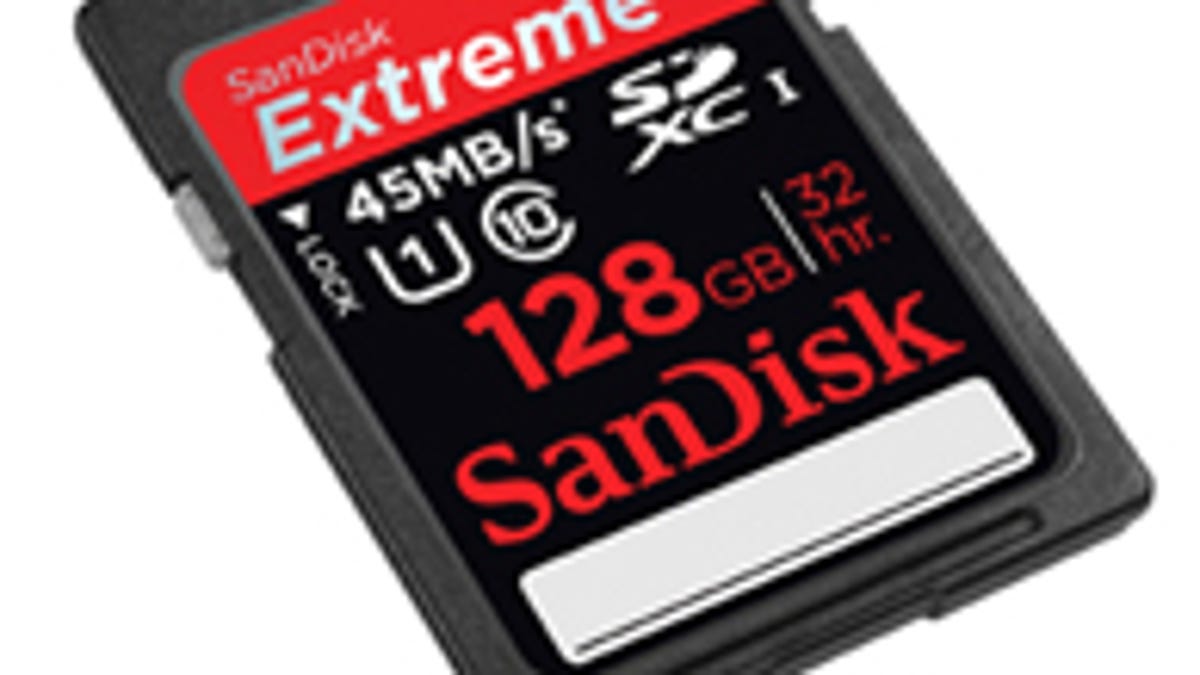Need room for 4,000 photos? Try SanDisk's 128GB SD card
It's not the company's fastest, but 64GB and 128GB SD cards will help customers who have a big appetite for data.

It's flash card season at CES (especially given the shutterbug boost by the conjoined Photo Marketing Association show), and SanDisk has a contribution with high-capacity mid-range SDXC cards.
The two SanDisk Extreme models, 64GB and 128GB, can transfer data at 45MBps. That's less than half the speed of the company's top-end Extreme Pro line of SD cards at 95MBps, but it should be good enough for many photographers and videographers.
The high capacity comes with a price premium--prices for the cards are $200 and $400--but could be useful for those shooting lots of video or traveling away from a computer. And if you're shooting raw photos--my camera's weigh in at 30MB apiece, typically--this card will hold more than 4,000 still images.
The cards are available now, SanDisk said (flying in the face of the CES vaporware trend).
The cards, with the UHS-I interface, are up to the chore of capturing 3D video in high-definition 1080p video, Sandisk said.
Also at CES, SanDisk rival Lexar announced faster but more expensive UHS-I cards, including a 64GB model that reaches 90MB/sec and a 128GB model that reaches 60MB/sec.
And on a more ethereal plane, Sony announced the first examples of a new flash card format called XQD. It offered 16GB and 32GB models of the cards, which so far work only in Nikon's new flagship D4 SLR.
The CompactFlash Association developed the new format as a sequel to CF. XQD offers faster data transfer speeds--125MBps in Sony's case--with faster speeds to come.

